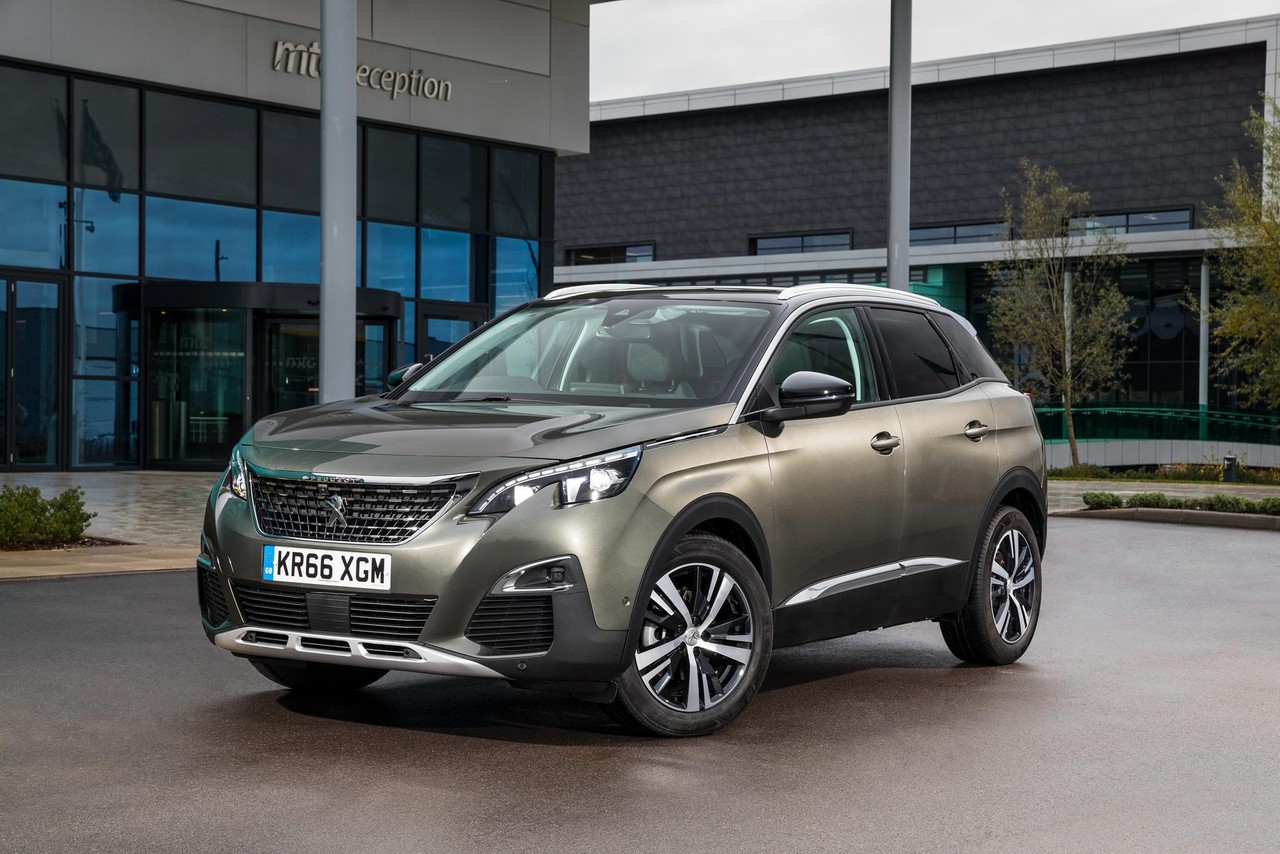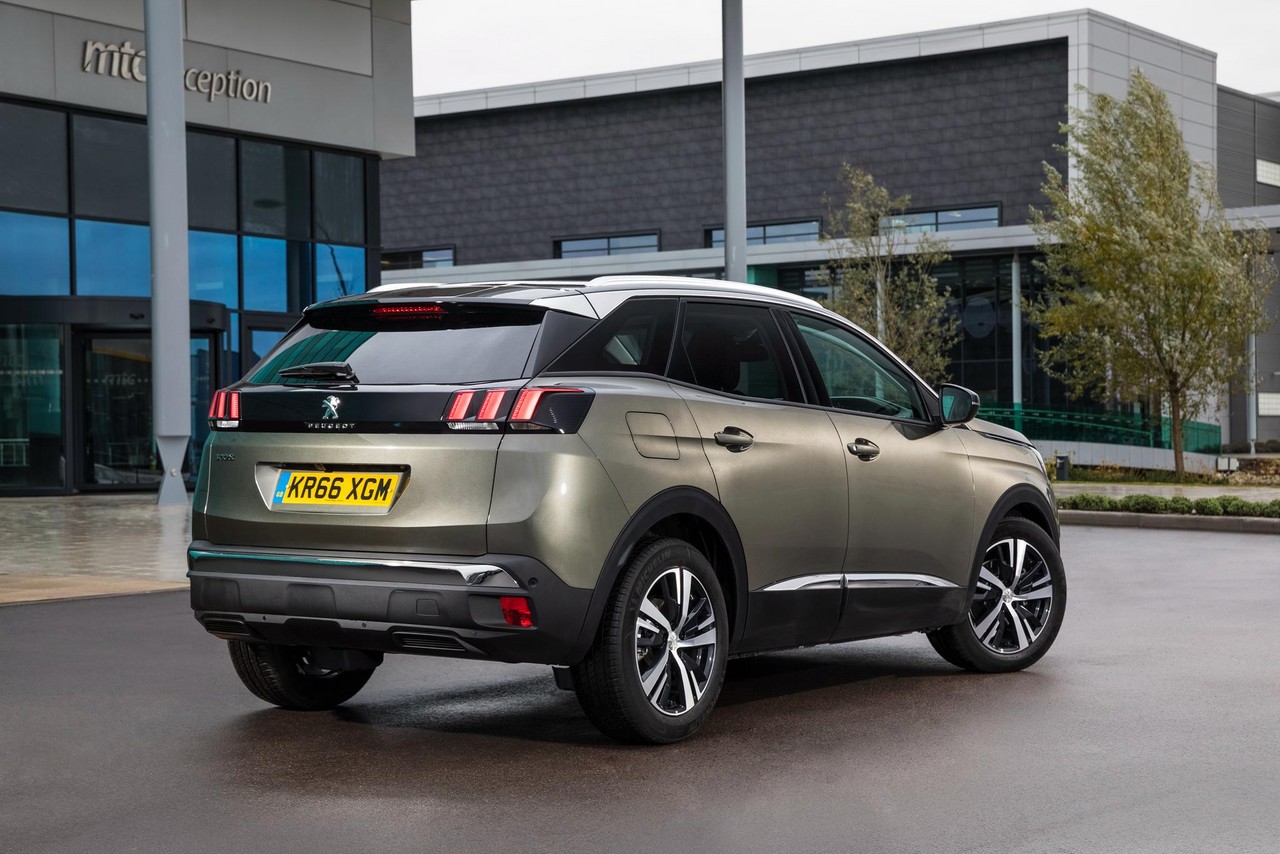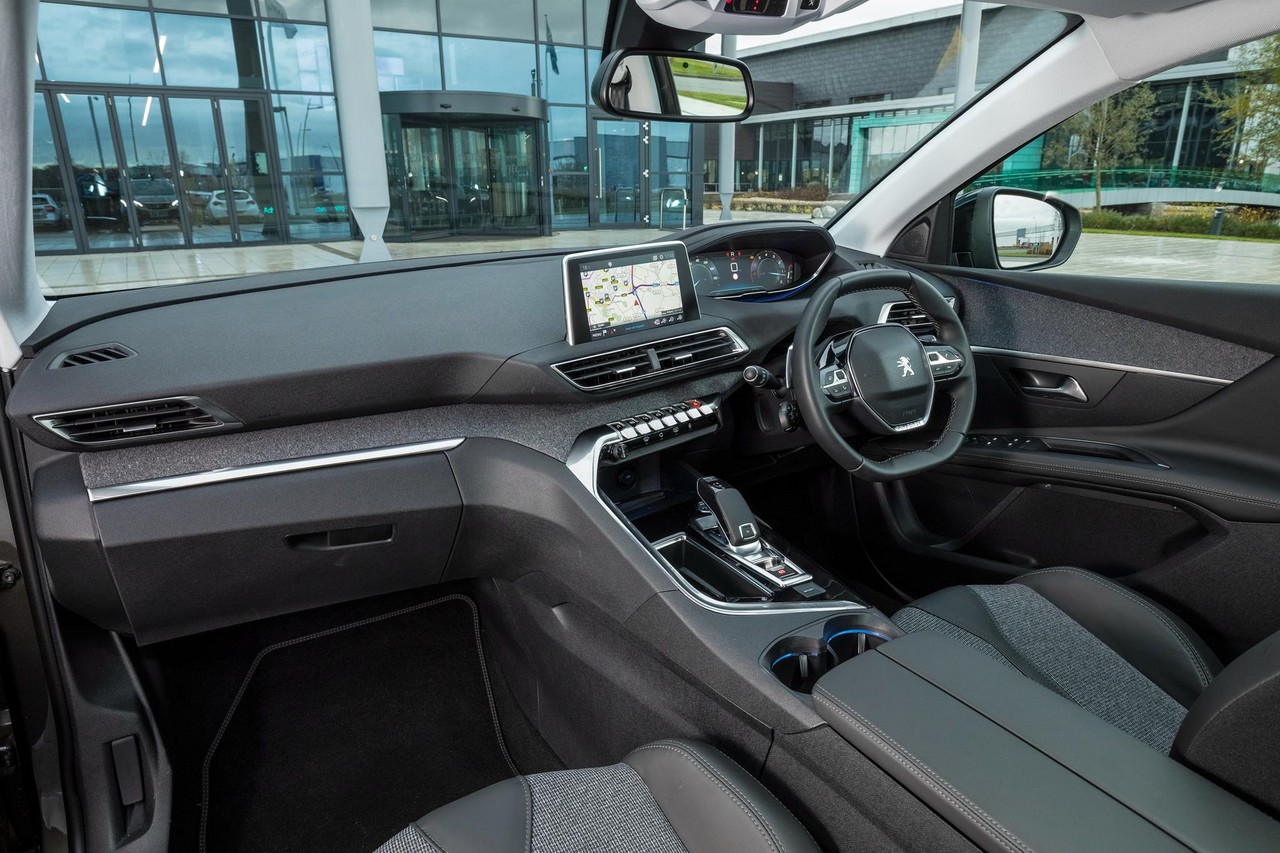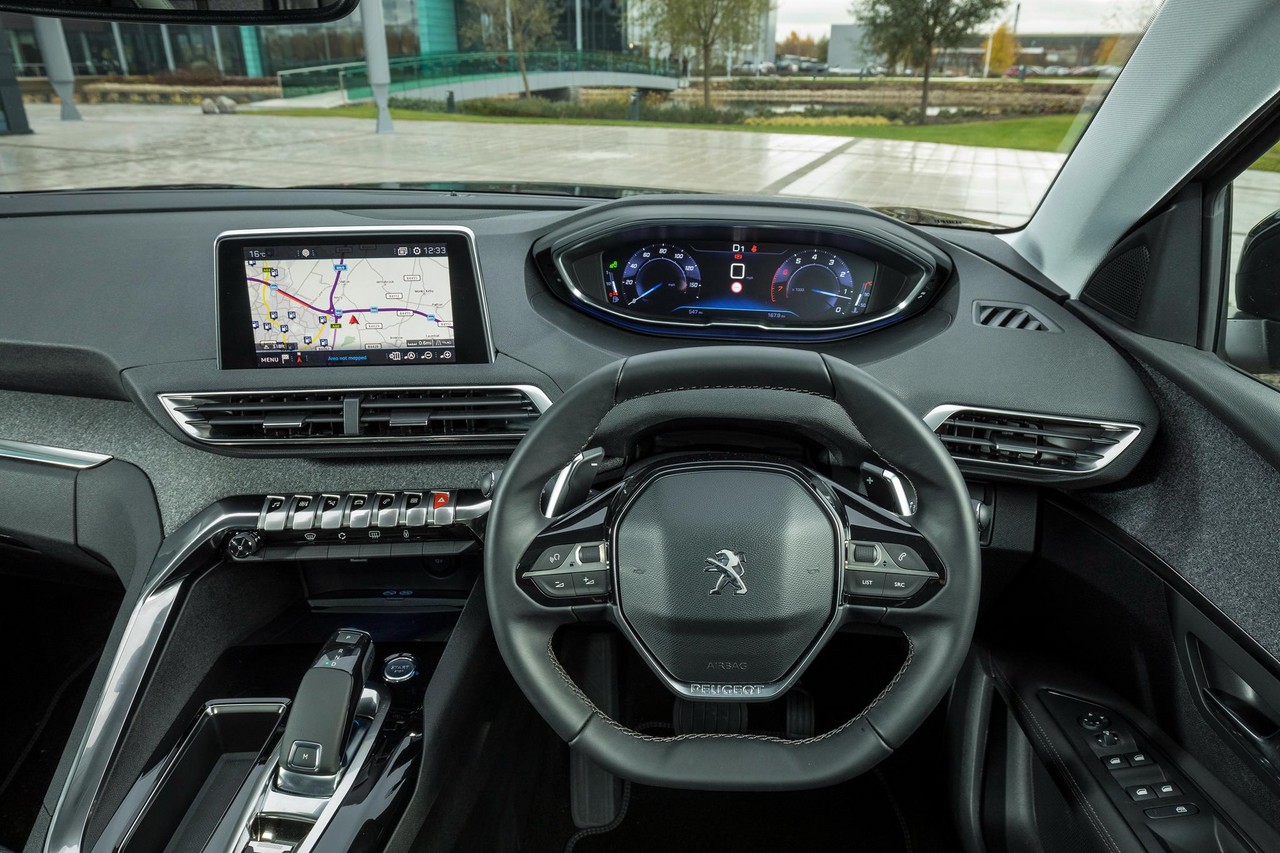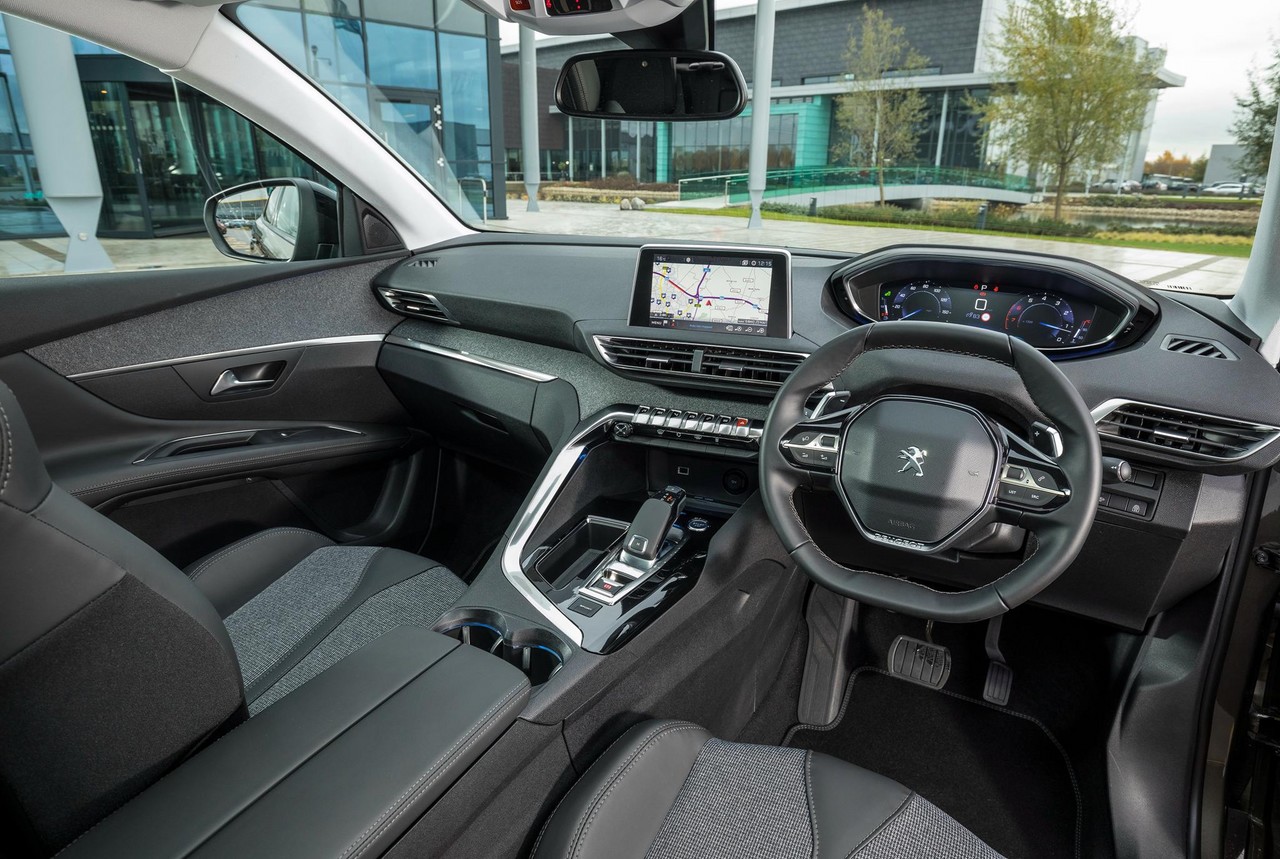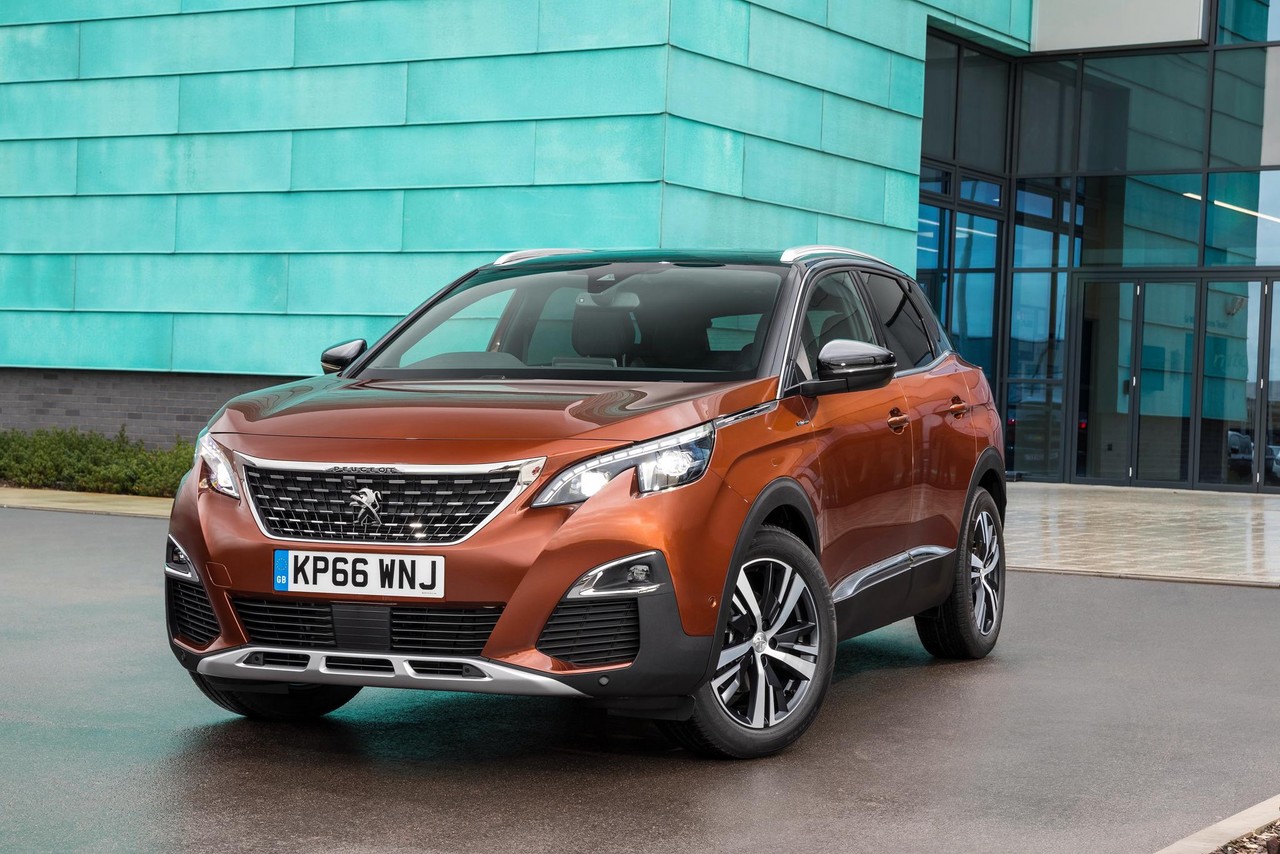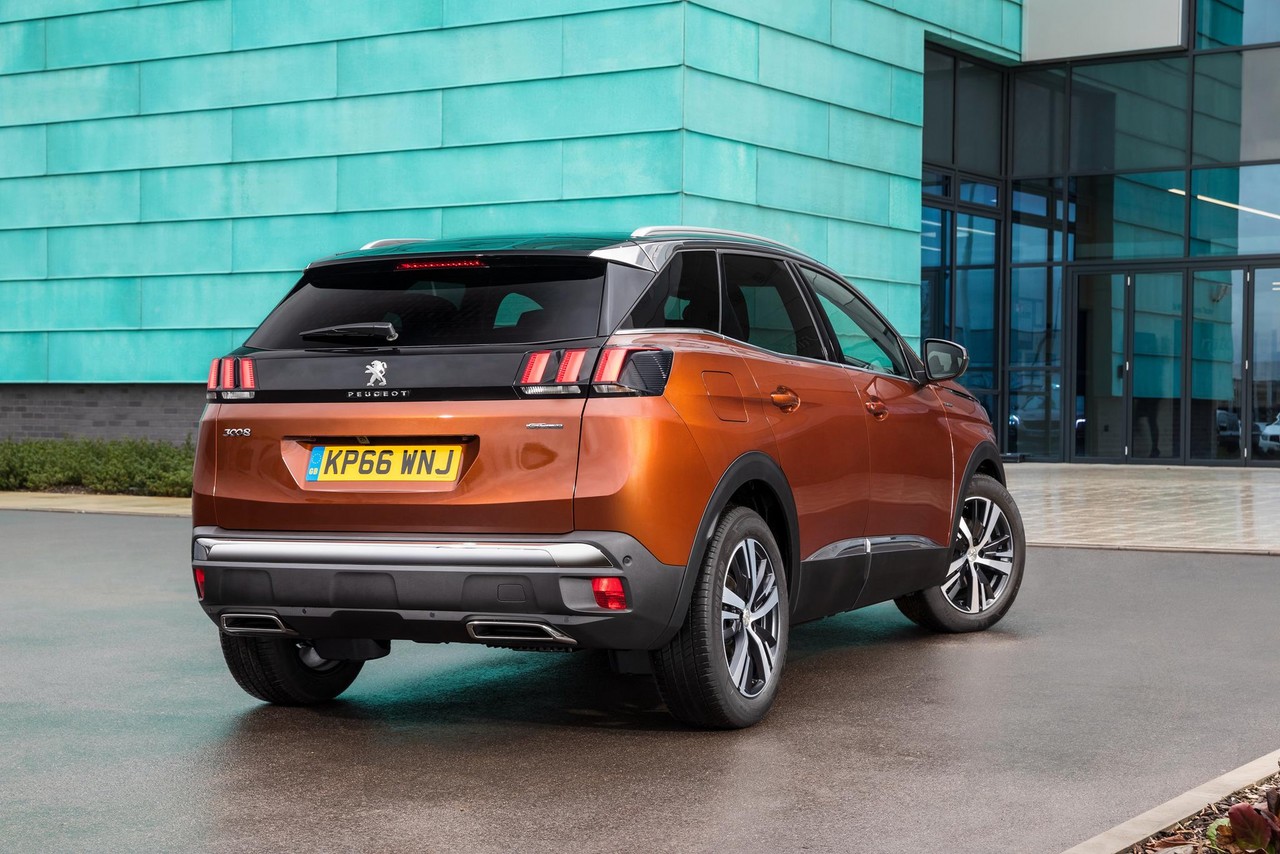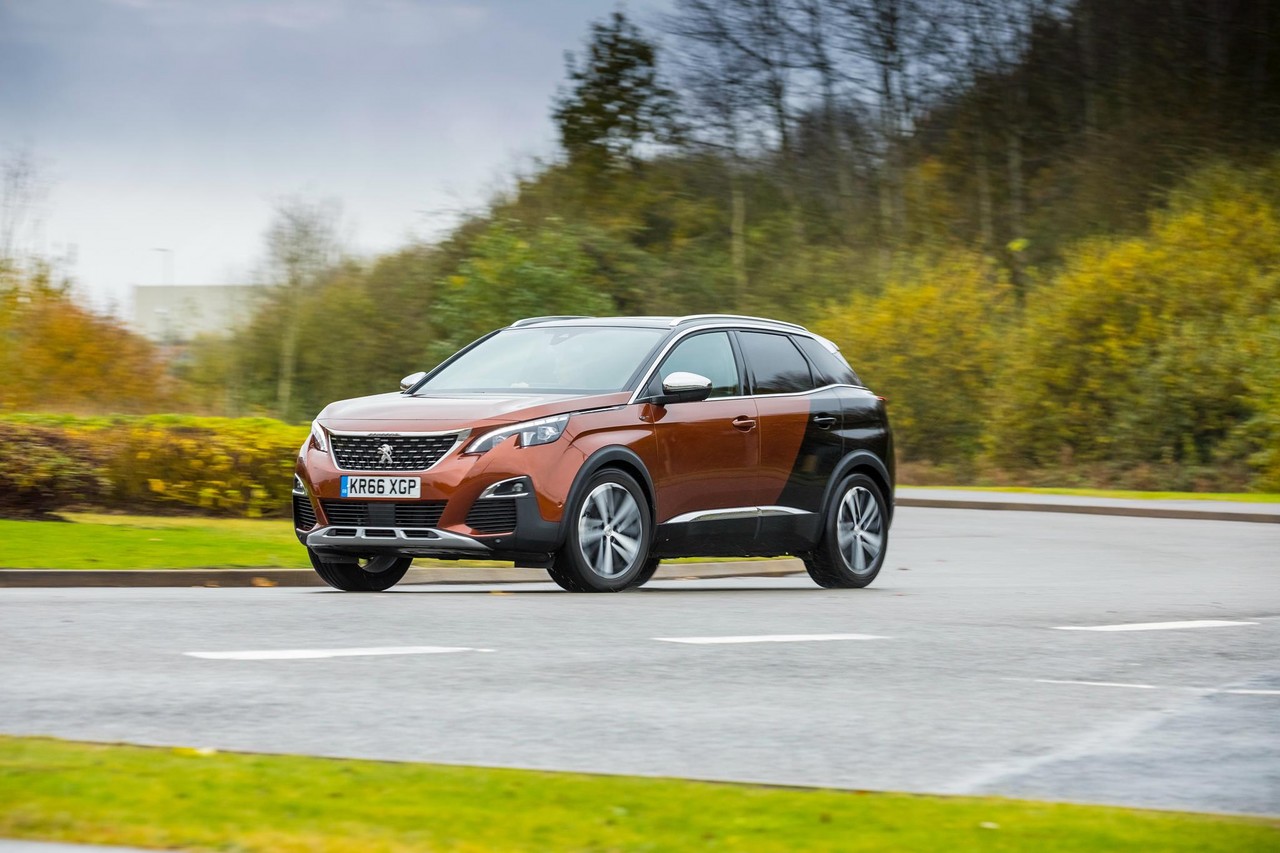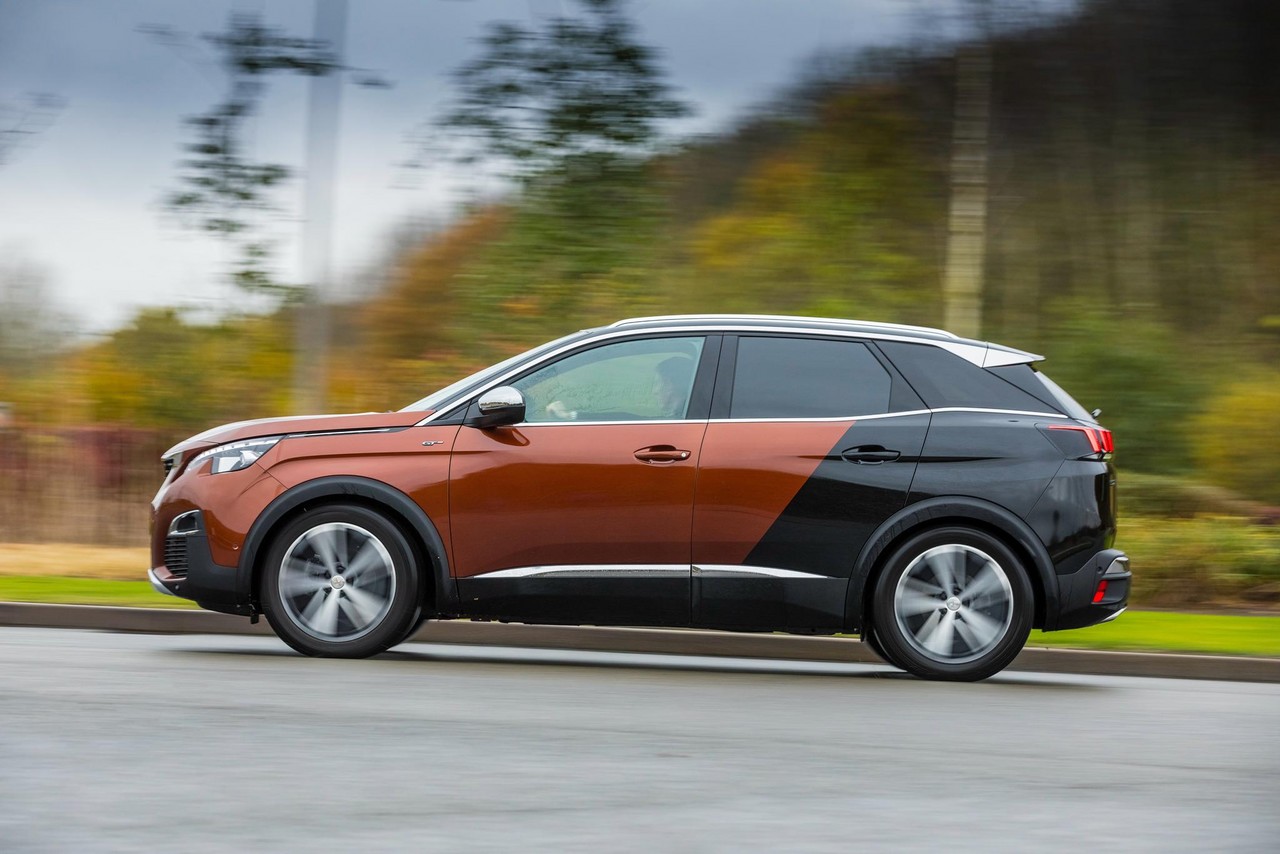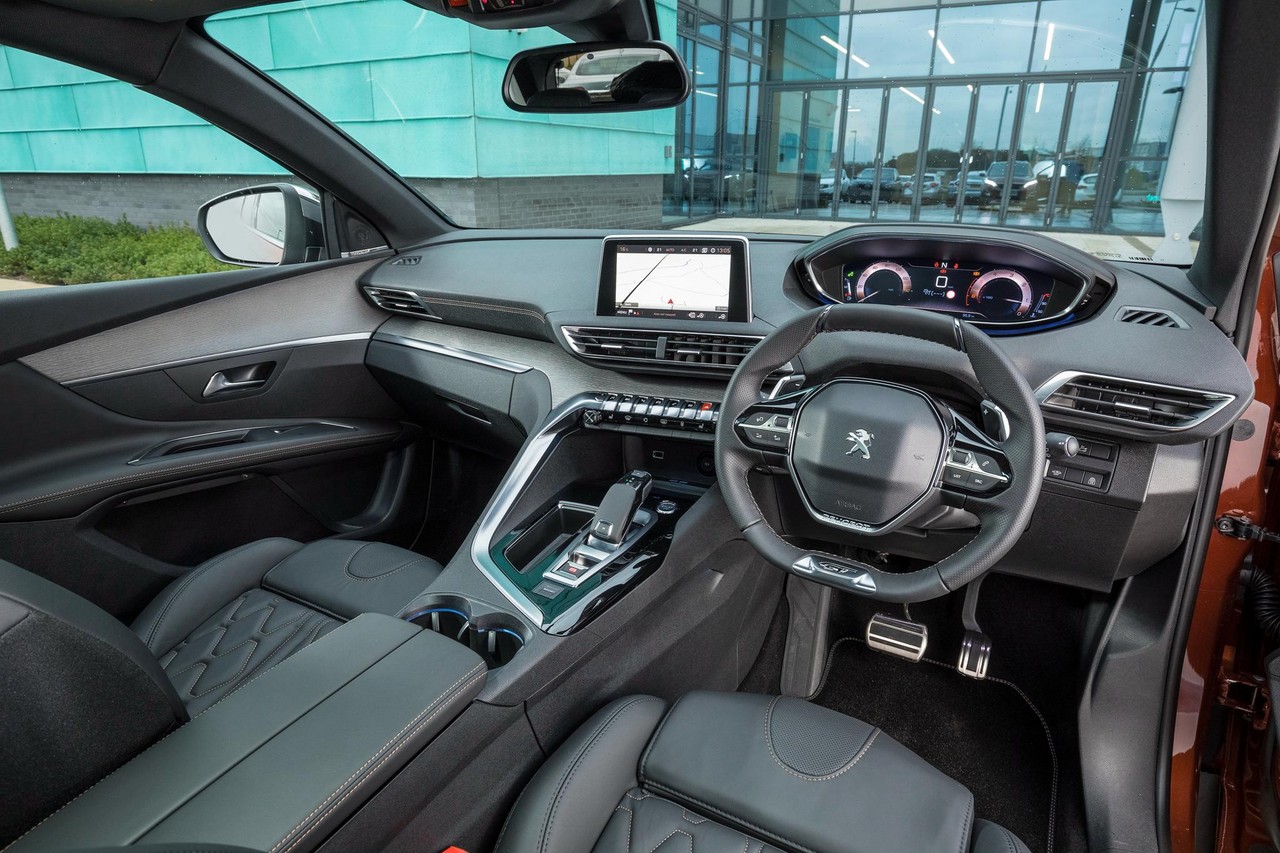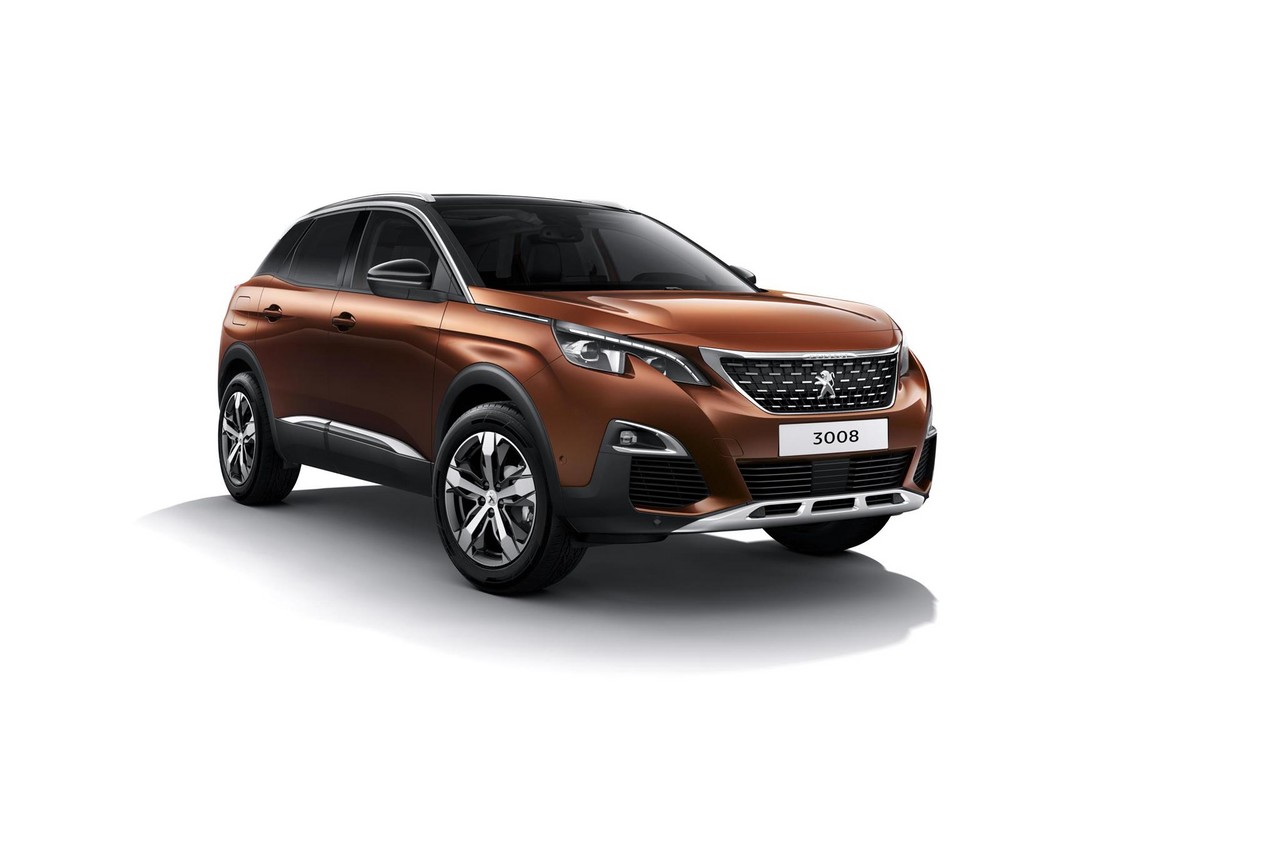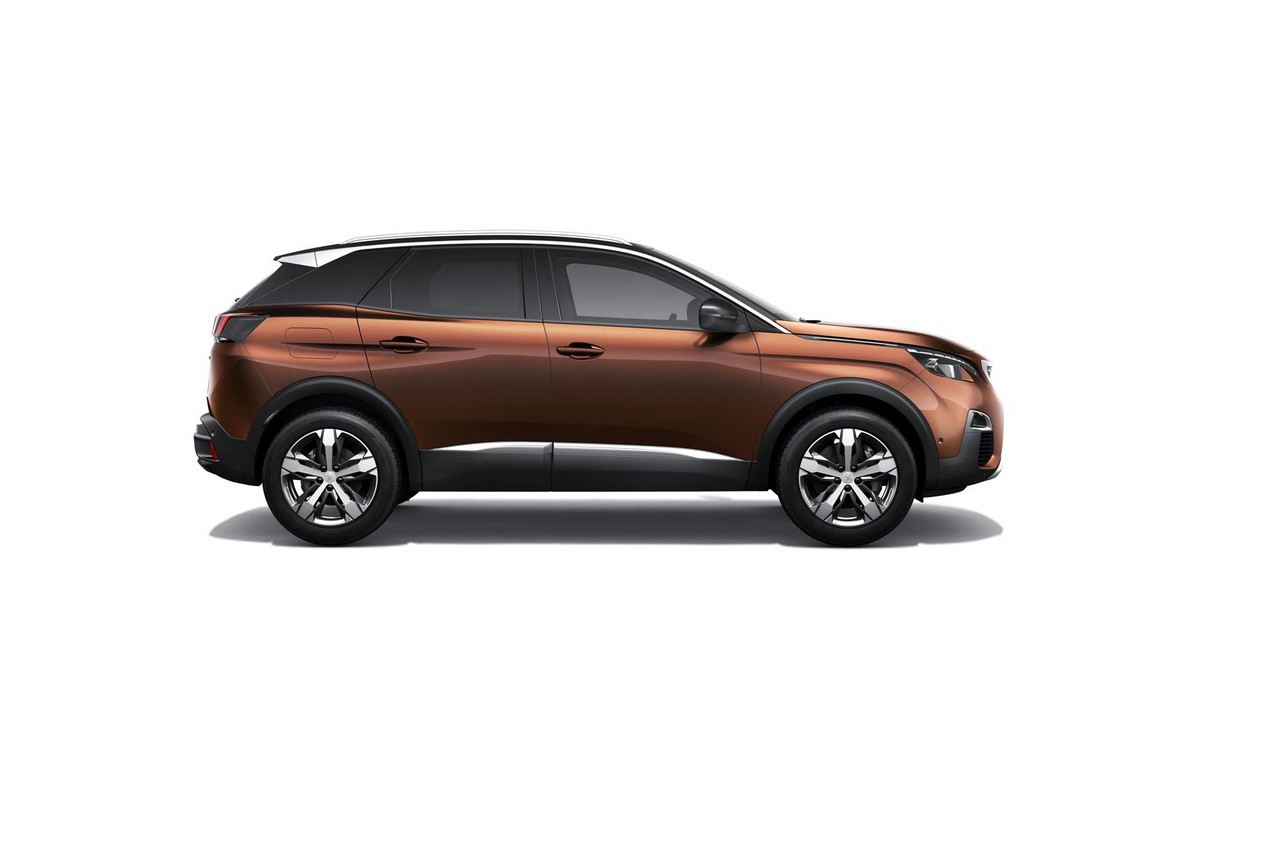
- Comfortable ride
- Accurate steering feel provides good feel
- Small turning circle
- Pleasing interior design and materials
- Autonomous Emergency Braking (AEB) initally omitted from 3008 Active and Allure, but standard from October 2017
- Lacks dynamic ability of some rivals (but its ride is more comfortable)
- SUV styling, but no off-road ability
- Expensive retail pricing
Overview
Commencing production in October 2016, the Peugeot P84 3008 was a mid-size crossover that was released in Australia in August 2017. Manufactured in Sochaux, France, the front-wheel drive Peugeot P84 3008 was offered with 1.6-litre turbocharged petrol engines (for the Active, Allure and GT Line editions) and 2.0-litre turbo diesel engines (for the GT editions). To reduce fuel consumption, the 2.0 BlueHDi diesel engines had a ‘Stop & Start’ function which enabled them to shut down when the vehicle was stationary in traffic.
For all Australian-delivered models, a six-speed automatic transmission was initially standard across the range. From September 2019, however, the Peugeot 3008 GT was equipped with an eight-speed Aisin automatic transmission. Due to this change, the Stop & Start function could operate at speeds up to 20 km/h and a ‘freewheeling’ function could select neutral at speeds above 25 km/h to reduce mechanical resistance.
| Variant | Edition | Engine | Trans. | Peak power | Peak torque |
|---|---|---|---|---|---|
| 1.6 THP | Active, Allure, GT Line |
1.6-litre turbo petrol I4 | 6sp auto | 121 kW at 6000 rpm | 240 Nm at 1400 rpm |
| 2.0 BlueHDi | GT | 2.0-litre turbo diesel I4 | 6sp auto, 8sp auto (2019-23) |
133 kW at 3750 rpm | 400 Nm at 2000 rpm |
Body and dimensions
The Peugeot P84 3008 was underpinned by the PSA EMP2 platform which was shared with the Peugeot T9 308 Hatch. Compared to the Peugeot T8 3008, the Peugeot P84 3008 was 82 mm longer (at 4447 mm), 11 mm narrower (1826 mm), 11 mm lower (1624 mm) and had a 62 mm longer wheelbase (2675 mm). On average, however, the Peugeot P84 3008 was around 100 kg lighter than its predecessor, in part due to mass reduction measures such as:
- The use of aluminium for the wings, front suspension arms and rear seat frames;
- A thermoplastic boot floor and tailgate; and,
- Reduced sound-deadening materials due to greater engine refinement.
The Peugeot P84 3008 had a luggage capacity of 520 litres (VDA method) beneath the cargo cover with the rear seats in position, though this increased to 1580 litres when the rear seats were folded and luggage was filled to the roofline.
Suspension and steering
The Peugeot P84 3008 had MacPherson strut front suspension and a torsion beam rear axle. Furthermore, the Peugeot 3008 has rack-and-pinion steering with electric power assistance.
Safety equipment
Standard safety equipment for the Peugeot 3008 included dual front airbags, front seat-mounted side airbags, full-length curtain airbags, ABS, electronic brake force distribution, brake assist, electronic stability control, traction control and front seatbelts with pre-tensioners and load limiters.
As standard, the Peugeot 3008 was fitted with the following active safety technologies –
- Distance Alert: monitored the road ahead and would warn the driver if a vehicle or pedestrian collision was anticipated;
- Lane Departure Warning (LDW): operating at speeds over 80 km/h, LDW used a camera to detect continuous or broken road lines. If the Peugeot 3008 crossed these lines without the indicators having been activated, visual and audible warnings would be issued;
- Driving Time Warning: would sound a warning chime if the vehicle had been driven for more than two hours continuously at speeds above 65 km/h; and,
- Speed limit recognition and recommendation: used a camera fitted at the top of the windscreen to detect and read speed limit and de-restriction signs, but could also use speed limit information from the navigation system. This information was then displayed on the instrument panel.
As standard, the Peugeot 3008 GT and GT Line editions were further equipped with a ‘Safety Pack’ which included –
- Autonomous Emergency Braking (or ‘Active Safety Brake’): if the distance to an object in front of the vehicle decreased such that there was a collision risk, the brakes would be applied automatically to reduce vehicle speed. AEB could detect moving vehicles when the Peugeot 3008 was driving at speeds between 5 km/h and 140 km/h, stationary vehicles from speeds of less than 80 km/h and pedestrians from speeds of less than 60 km/h;
- Adaptive Cruise Control with stop function: operating at speeds between 30 km/h and 180 km/h, Adaptive Cruise Control used a radar sensor – mounted in the front bumper – which had a range of 150 metres to monitor traffic ahead. As such, Adaptive Cruise Control could maintain the speed set by the driver and automatically brake to maintain a safe following distance, or maintain a pre-set distance from the vehicle ahead (with selectable distant, normal and close settings);
- Active Lane Departure Warning: operating at speeds between 65 km/h and 180 km/h, Active Lane Departure Warning would correct the vehicle’s course by progressively applying steering lock if it determined that the vehicle was likely to depart from its lane. However, the corrective steering could be over-ridden by holding the steering wheel firmly or by activating an indicator;
- Active Blind-spot Monitoring: operating at speeds between 12 km/h and 140 km/h, Active Blind-spot Monitoring could warn the driver if a vehicle was in the driver’s blind spot by illuminating a lamp in the relevant door mirror. Furthermore, corrective steering would be initiated if the Peugeot 3008 crossed a lane marking when there was a vehicle in the blind spot;
- Driver Attention Warning: used a camera mounted at the top of the windscreen to monitor the driver’s alertness by analysing deviations from the path between road markings. If a deviation was detected, audible and visual warnings would be issued; and,
- Peugeot Smartbeam Assistance: automatically switched between high beam and low beam depending on lighting conditions and oncoming traffic.
As an extra-cost option, this Safety Pack was also available for the 3008 Allure.
From October 2017, the Peugeot 3008 was equipped with Autonomous Emergency Braking (or ‘Active Safety Brake’) as standard.
Euro NCAP testing
In Euro NCAP testing , the Peugeot 3008 received a five star safety rating which included an 86 per cent adult occupant protection rating and an 85 per cent child occupant protection rating. In the frontal offset test, protection of the driver’s head, thighs feet and lower right leg were rated as good, but chest protection was rated as marginal and lower left protection as adequate. Maximum points were awarded in the side impact test; in the more severe pole test, however, chest protection was rated as adequate.
Features: Peugeot 3008 Active
Standard features for the Peugeot 3008 Active included 17-inch ‘Chicago’ alloy wheels with 215/65 R17 tyres, an 8.0-inch central touch screen with satellite navigation, a digital radio tuner (DAB), Bluetooth mobile phone connectivity, ‘Mirrorscreen’ (for smartphone integration via Apple CarPlay, Android Auto and Mirrorlink), an induction-based smartphone charging plate, voice recognition for radio and telephony, ‘Meco’ two-tone fabric trim, dual-zone climate control air conditioning, cruise control with speed limiter, halogen headlights with dusk-sensing function, LED daytime running lights, rain-sensing wipers, front and rear parking sensors, a reversing camera (Peugeot’s ‘Visiopark 1’), a leather steering wheel, 1/3 to 2/3 split folding ‘Magic Flat’ rear seats, remote central locking, power windows, power adjustable mirrors with automatic dipping on reverse, a height and reach adjustable steering column, height adjustable front seats, an electrochrome rear view mirror (auto dimming), an electric parking brake, three 12 volt power sockets (in the dashboard, rear cabin and load area), a 12.3-inch digital instrument panel, carbon effect dashboard trim, aluminium roof bars, a trip computer and an immobiliser.
Features: Peugeot 3008 Allure
Compared to the 3008 Active, the 3008 Allure was further equipped with 18-inch ‘Detroit’ two-tone finish diamond cut alloy wheels with 255/55 R18 tyres, ‘Peidimonte’ two-tone TEP/fabric trim, driver’s seat lumbar adjustment, LED puddle lights, a flat folding front passenger seat, Peugeot’s ‘Open and Go’ (i.e. proximity key and push-button start), power folding door mirrors, rear privacy glass, illuminated vanity mirrors and ‘Brumeo’ fabric interior trim. Furthermore, the 3008 Allure was fitted with a 360 degree camera system (Peugeot’s ‘VisioPark 2’) and ‘City Park’ which could identify parking spaces and provide automated steering for right angle and parallel parking manoeuvres.
Features: Peugeot 3008 GT Line
Relative to the 3008 Allure, the 3008 GT Line added 18-inch ‘Detroit’ matt haria two-tone finish diamond cut alloy wheels, ‘Imila’ two-tone TEP/fabric trim, self-levelling LED headlamps, LED fog lights with static cornering function and a ‘Mistral’ black roof lining.
Features: Peugeot 3008 GT
The range-topping Peugeot 3008 GT was distinguished by its 19-inch ‘Boston’ matt haria two-tone finish diamond-cut alloy wheels with 235/50 R19 tyres, ‘Mistral’ Alcantara/TEP trim, heated front seats with adjustable cushion length, driver’s seat massage and memory functions, and grey Alcantara interior trim.
2019 Peugeot 3008 Crossway Edition
The Peugeot 3008 Crossway Edition was released in Australia in February 2019. Based on the Peugeot 3008 1.6 THP Allure, the 3008 Crossway Edition included a 515 watt Focal audio system with ten speakers and a subwoofer, Alcantara trim, blue stitching (for the seats, centre armrest, door trims and steering wheel) and ‘Crossway’ floor mats. Visually, the 5008 Crossway Edition could be identified by its black diamond roof, chrome pack, ‘Crossway’ badging and B-pillar motif. Australian deliveries of the Peugeot 3008 Crossway Edition were limited to sixty (60) vehicles.
Specifications
